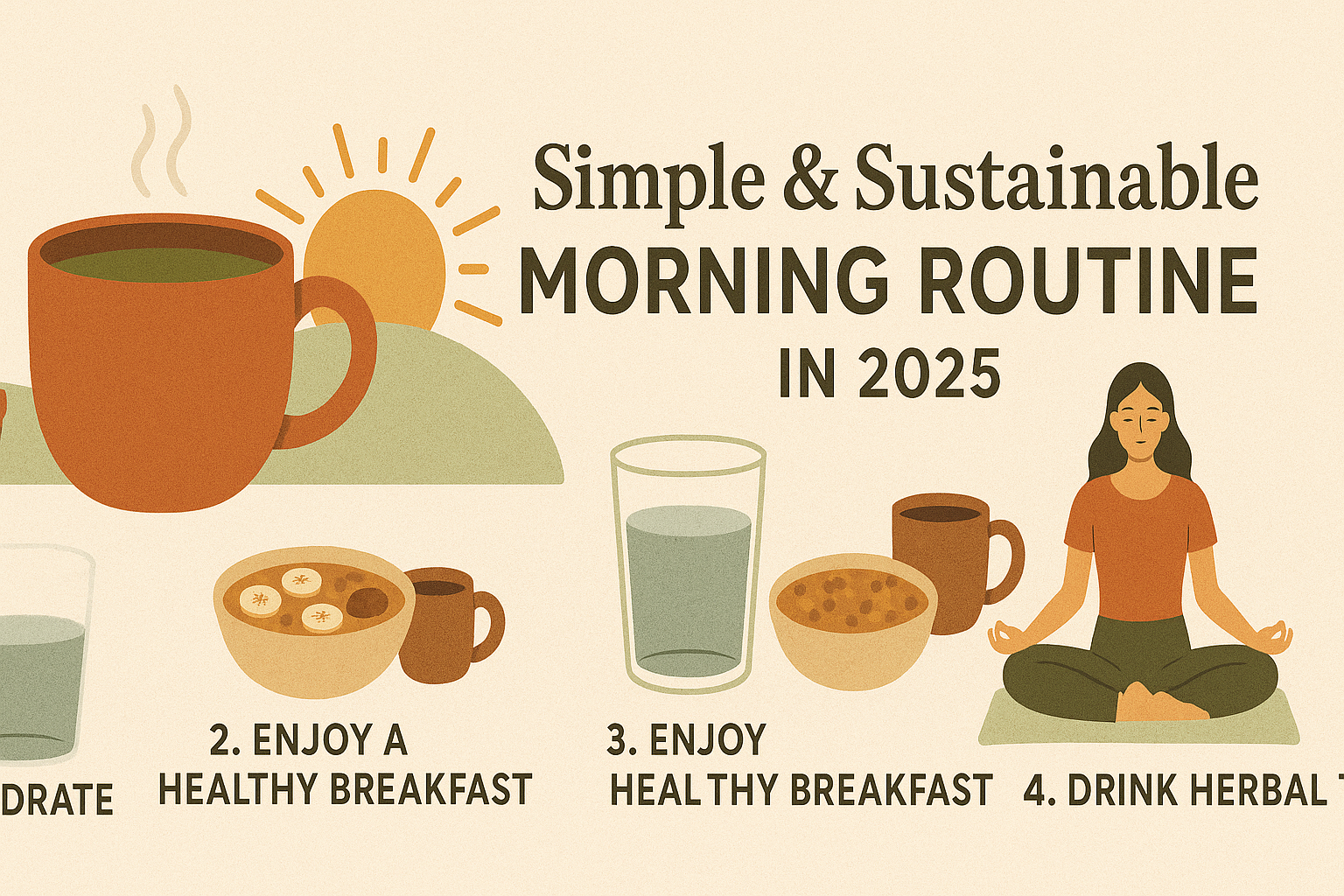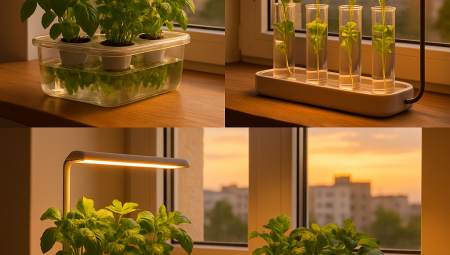Why Your Morning Routine Matters More Than Ever
In 2025, as technology advances and daily life grows increasingly fast-paced, establishing a morning routine that is both simple and sustainable has become essential. For digital professionals, entrepreneurs, and wellness-focused individuals, the way you start your day directly influences your productivity, mental health, and long-term success. This article offers an actionable, science-backed guide to designing a powerful morning routine tailored for the modern era.
What Is a Sustainable Morning Routine?
A sustainable morning routine is a repeatable and energizing set of habits that help you start your day with intention, clarity, and calm. Unlike rigid routines that feel forced, a sustainable one adapts to your lifestyle, supports your goals, and aligns with your physical and mental health.
Why Simplicity Wins in 2025
With the overload of self-help advice online, people often fall into the trap of over-complicating their routines. In 2025, digital burnout is a real concern. A simpler approach means more consistency and less stress.
The Science Behind Morning Habits
Studies from 2023–2025 reveal that early-day habits directly affect cognitive function, hormone levels, emotional regulation, and productivity. Cortisol levels peak in the morning, making it the best time for planning, reflection, and light physical activity.
Biological Timing and Circadian Rhythms
Synchronizing your activities with your circadian rhythm enhances focus and energy. Your internal clock thrives on consistency.
Step-by-Step: Crafting Your Ideal Morning Routine
Step 1 – Wake Up at the Same Time Daily
Set a realistic wake-up time that aligns with your natural sleep cycles. Even on weekends.
Step 2 – Hydrate First Thing
Drink at least 500 ml of water upon waking to kickstart your metabolism and support brain function.
Step 3 – Avoid Your Phone for the First 30 Minutes
Notifications can hijack your attention. Use the first moments of the day for presence and reflection.
Step 4 – Practice Mindfulness or Meditation (5–10 Minutes)
Apps like Calm, Headspace, or Insight Timer offer guided sessions that reduce anxiety and boost emotional clarity.
Step 5 – Move Your Body
Whether it’s yoga, walking, or light stretching, movement increases endorphins and focus.
Step 6 – Nourish Yourself with a Balanced Breakfast
Focus on high-protein, fiber-rich options. Smoothies with greens and healthy fats are quick and ideal.
Step 7 – Set Intentions for the Day
Write down 3 key goals or affirmations. This primes your brain to prioritize what matters.
Common Mistakes That Sabotage Your Morning
Skipping Sleep to Wake Up Earlier
This backfires. Prioritize quality sleep over early wake-up for long-term health.
Consuming Negative Media First Thing
Avoid news, emails, or social media right after waking to protect your mental state.
Overloading Your Routine
More steps don’t mean better outcomes. Focus on what truly energizes you.
Tools and Tech to Support Your Routine
Smart Alarm Clocks (e.g., Hatch Restore 2)
Wake up gently with light simulation and soundscapes.
Habit Tracking Apps (e.g., Streaks, Habitica, Notion templates)
Gamify your consistency.
Biofeedback Wearables (e.g., WHOOP, Oura Ring)
Track your sleep, readiness, and recovery to optimize timing.
Who Should Follow This Routine?
This routine is ideal for:
- Tech-savvy professionals
- Digital entrepreneurs
- Remote workers
- Students and creatives
If your day involves screen-time, problem-solving, or decision-making, this structure helps you preserve energy and boost focus.
What is the best morning routine in 2025?
The best morning routine in 2025 includes waking up consistently, hydrating, avoiding digital distractions, meditating, engaging in light movement, eating a healthy breakfast, and setting intentions—all in a simple, sustainable format.
Expert Pro Tips for 2025
- Prepare the Night Before: Lay out clothes, prep breakfast ingredients, and plan your to-do list.
- Don’t Hit Snooze: It disrupts your sleep cycle and leads to grogginess.
- Use a Sunrise Alarm: Natural light helps regulate melatonin and wakefulness.
- Limit Morning Decisions: Create a routine that reduces mental clutter.
- Keep It Flexible: Have a core structure but allow for spontaneity.
- Review Weekly: Adjust your routine based on what works and what drains you.
Frequently Asked Questions (FAQ)
How long should a morning routine be?
It can range from 20 minutes to 1 hour depending on your lifestyle. Consistency matters more than duration.
What if I’m not a morning person?
Start small—choose one or two simple habits. Gradual improvements lead to sustainable changes.
Should I check my emails first thing in the morning?
No. It puts you in a reactive mindset. Use the early hours for proactive, focused activities.
Can I do my routine at night instead?
Some elements, like journaling or goal-setting, can be done at night. But physiological benefits like cortisol rhythm make mornings ideal for most.
How do I stay motivated?
Track your progress, celebrate small wins, and remember your “why.”
Final Words
Building a morning routine in 2025 isn’t about perfection—it’s about progress. With the right mix of intention, simplicity, and self-awareness, your mornings can become a launchpad for a productive and fulfilling day.
💬 What’s your current morning routine like? Got any tips to share? Drop a comment below—we’d love to hear from you!



